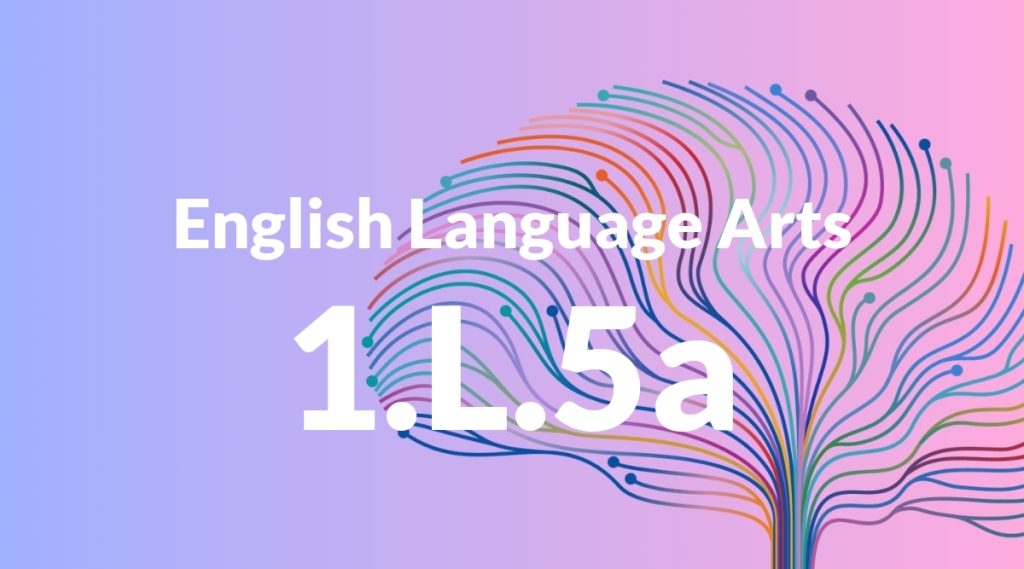Standard: 1.L.5a – Sort words into categories (e.g., colors, clothing) to gain a sense of the concepts the categories represent.
Grade level: Grade 1
Subject: English Language Arts
Domain: Language
Teacher Overview
This standard focuses on helping students understand how to sort words into categories to better grasp the concepts that these categories represent. It is important because it builds foundational skills in vocabulary development and critical thinking, which are essential for reading comprehension and effective communication. Before tackling this standard, students should be able to recognize and name common objects and understand basic grouping concepts.
After mastering this standard, students will be able to tackle more complex categorization tasks, enhancing their reading comprehension and writing skills.
Common Misconception 1
A common misconception is that any word can fit into any category. This is incorrect because categories are defined by specific criteria, and not all words will meet those criteria.
Intervention 1
To address this misconception, provide clear examples and non-examples, and engage students in discussions about why certain words fit or do not fit into specific categories.
Common Misconception 2
Another misconception is that categories are rigid and cannot overlap. This is incorrect because some words can belong to multiple categories based on different criteria.
Intervention 2
To address this misconception, introduce the idea of overlapping categories and provide examples of words that can belong to more than one category.
Prerequisite Knowledge
Students should be familiar with basic vocabulary and able to recognize and name common objects. They should also understand the concept of grouping similar items together.
Subsequent Knowledge
After mastering this standard, students will develop skills in more complex categorization and classification tasks, which will aid in their understanding of relationships between words and concepts. This will also support their ability to make connections in reading comprehension and writing.
Instructional Activities
- Sorting a set of picture cards into categories
- Creating a word wall with different categories
- Playing a matching game where students match words to their categories
- Using a Venn diagram to show overlapping categories
- Conducting a scavenger hunt where students find items that fit into specific categories




